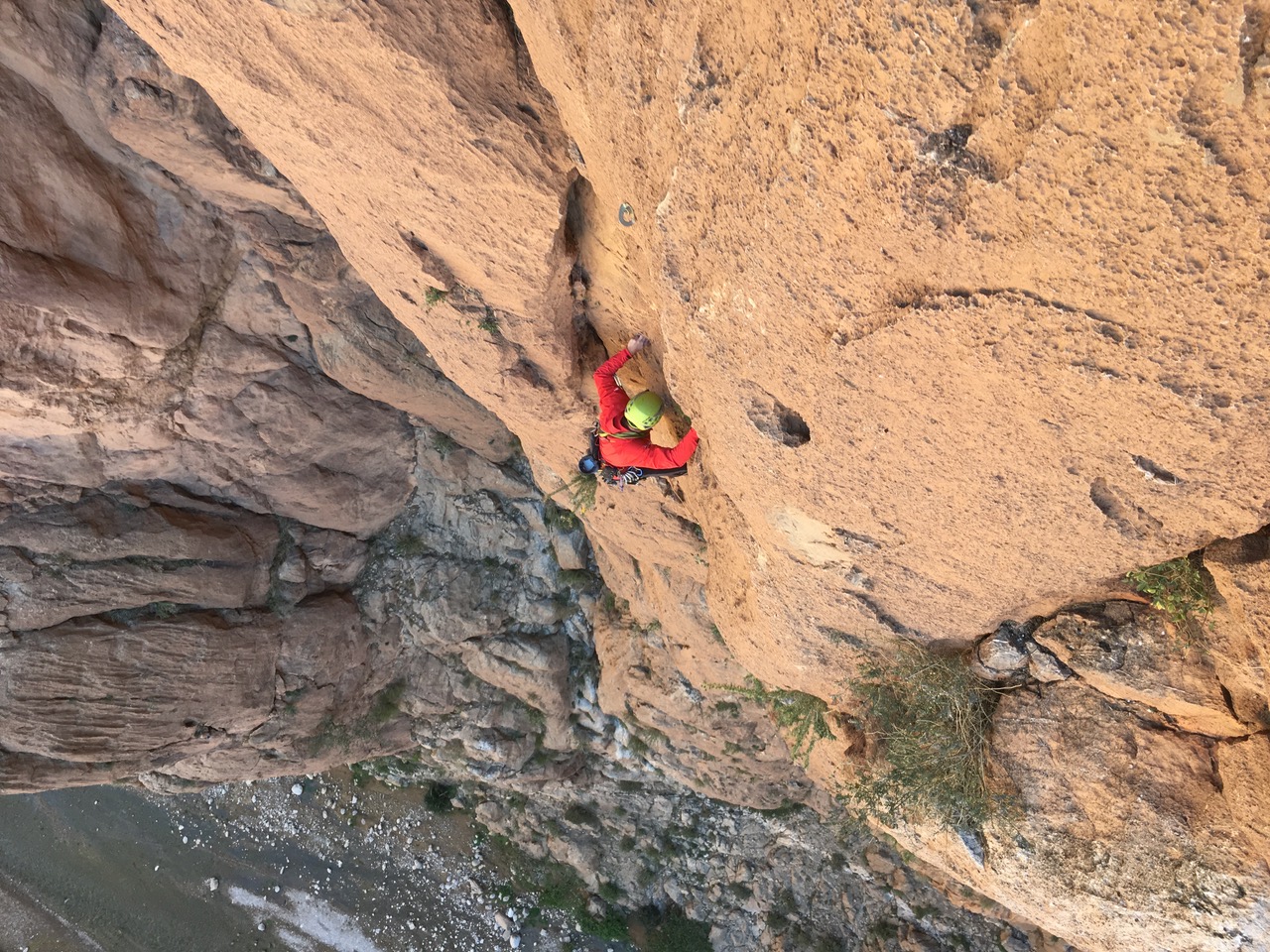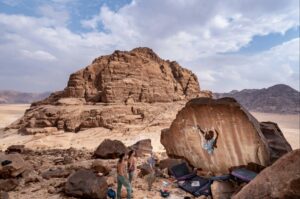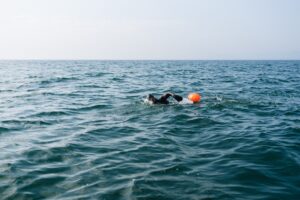On the southern fringe of the High Atlas is one of Morocco’s premier climbing destinations, the Todra Gorge. Climbing has been going on here since the late 1960s, and for the first 30 years, it was the main place to climb in Morocco. In the last decade, a revival has taken place, and climbers are flocking there once again.
Yet accurate route information remains notoriously difficult to come by. Parties from all over the world have bolted hundreds of lines over four decades. In many cases, they did not bother recording the details.

Tisgui, the closest town to the gorge. Photo: Monica Malfatti
Although many routes are well-bolted, other opportunities exist for climbers interested in trad or in setting new routes, especially multi-pitch ones. Both sides of the gorge are suitable, so depending on your needs, you can always find a line that’s either in the sun or the shade.
Often, Moroccan souvenir sellers crowd the base of the cliffs, which sometimes turns into a weird adventure. It’s not always easy to reach the start of a climb without being convinced to buy something ridiculous.

Rock climbing in the Todra Gorge. Photo: Monica Malfatti
Climbing beta
Many sport routes in the gorge are over 30m long, so it is worth having a 70m rope. For multi-pitch climbing, we’d suggest a half rope of 60m or even longer if you want to be sure you have enough for every situation.
One advantage of climbing in Todra is the incredible lack of mosquitoes, ticks, spiders, or other intrusive bugs. However, note that there is no mountain rescue service in Morocco, so be even more careful than usual in choosing the right path to the walls.
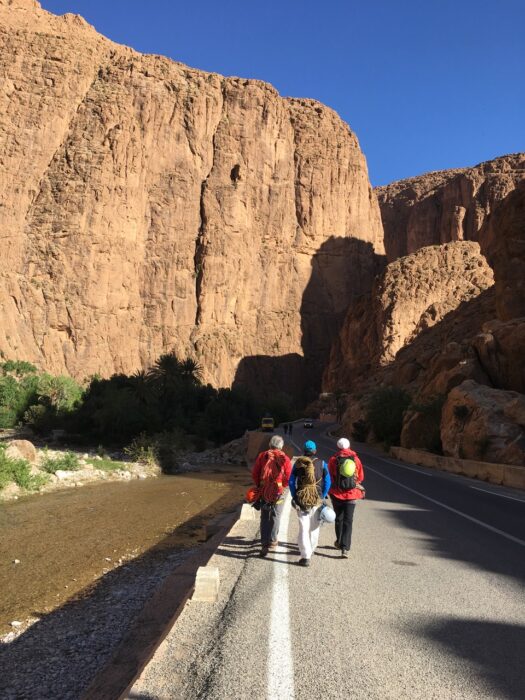
Reaching the walls. Photo: Monica Malfatti
Crags and sections
As we previously pointed out, the Todra Gorge in Morocco is particularly good for multi-pitch climbing. There are a few single-pitch bolted routes, too. We suggest two crags in particular.
Plage Mansour is located right at the entrance to the gorge and offers almost 30 routes, mostly between 5a and 6b. Many pitches on this crag are over 30m, and a few are even 48-50m. Vertical and slab climbing dominate, and the bolting is good. In the morning, Plage Mansour gets the sun until 2 or 3 pm, when it slips into shadow.
Petite Gorge is the other unmissable crag in Todra Gorge. This section lies about five kilometers from the entrance and can be reached either by car or on foot. Like Plage Mansour, the crag basks in the sun until afternoon.
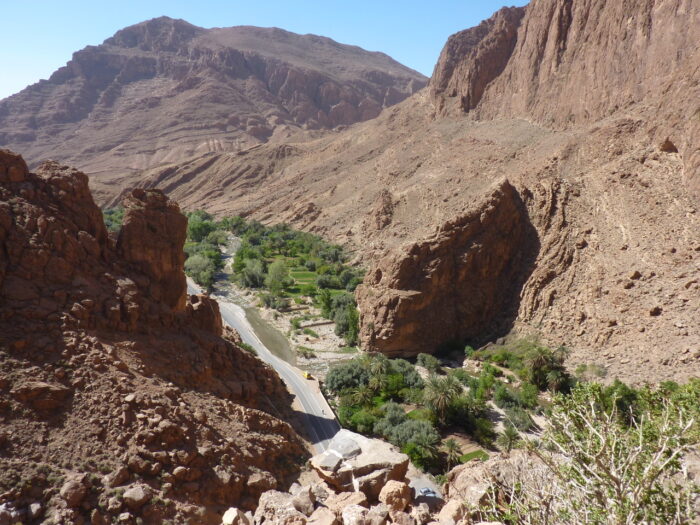
The view from the top of one of the many multi-pitch routes in the gorge. Photo: Monica Malfatti
Multi-pitch routes
Berbertraum is a 340m route leading to the top of Aiguille des Palmeraies. Its 13 pitches range between 4a and 5c, and the longest is 45m. A trail between the rocks leads down from the top, or you can rappel. The route is exposed to the sun until late afternoon, when shadows begin to creep across the upper pitches.
Smoufond is a 6a+ route that leads to the top of Pieds Dans l’Eau after about 150m. To get to the bottom of the wall, you have to cross a river — a strange obstacle. After the climb, there are two rappels, of 45m and 60m.
Another route that starts by the water is Vole de Defile, which leads to the top of Aguille du Gue. It is four pitches long and graded 6a, V+, V+, and III. There is also another route nearby, called La Diedre, which is partially bolted. Because La Diedre and Vole de Defile are so close to each other, you can connect them and climb to the top with an easier variant, avoiding the Grade 6 pitches on both routes.

Todra Gorge’s main road seen from the wall, while climbing. Photo: Monica Malfatti
How to get there
Marrakech is the nearest international airport, and daily flights are available from throughout Europe. At the airport, you can exchange euros for Moroccan dirhams. It is still largely a cash economy, and you can only use credit cards in places like supermarkets. You can also buy a SIM card at the airport, although you would not use it much in the Todra Gorge, which has no cell coverage.

The main market in Marrakech. Photo: Monica Malfatti
It takes about seven hours to drive from Marrakesh to the Todra Gorge, so we suggest spending the first and last nights in the city. There is also an airport in Ouarzazate, but flights are available only from April through the summer.
From Ouarzazate to the Todra Gorge takes about two hours by car. Or you can catch a bus from Marrakech to the town of Tinghir. From there, take a taxi 15km to Todra. You don’t need a car in the gorge itself, since most areas are just minutes by foot from the entrance.

Sign to one of the many hostels in the gorge. Photo: Monica Malfatti
Accommodation
Tisgui, the closest village to the gorge, has many small hotels and hostels; for example, Etoile des Gorges. Hotel Yasmina is located right in the heart of the climbing, within easy walking distance of most areas. Hotel Mansour and Hotel La Vallee are popular options at the entrance of the gorge. For those seeking a little more luxury, the Kasbah Lamrani in Tinghir is highly recommended.
